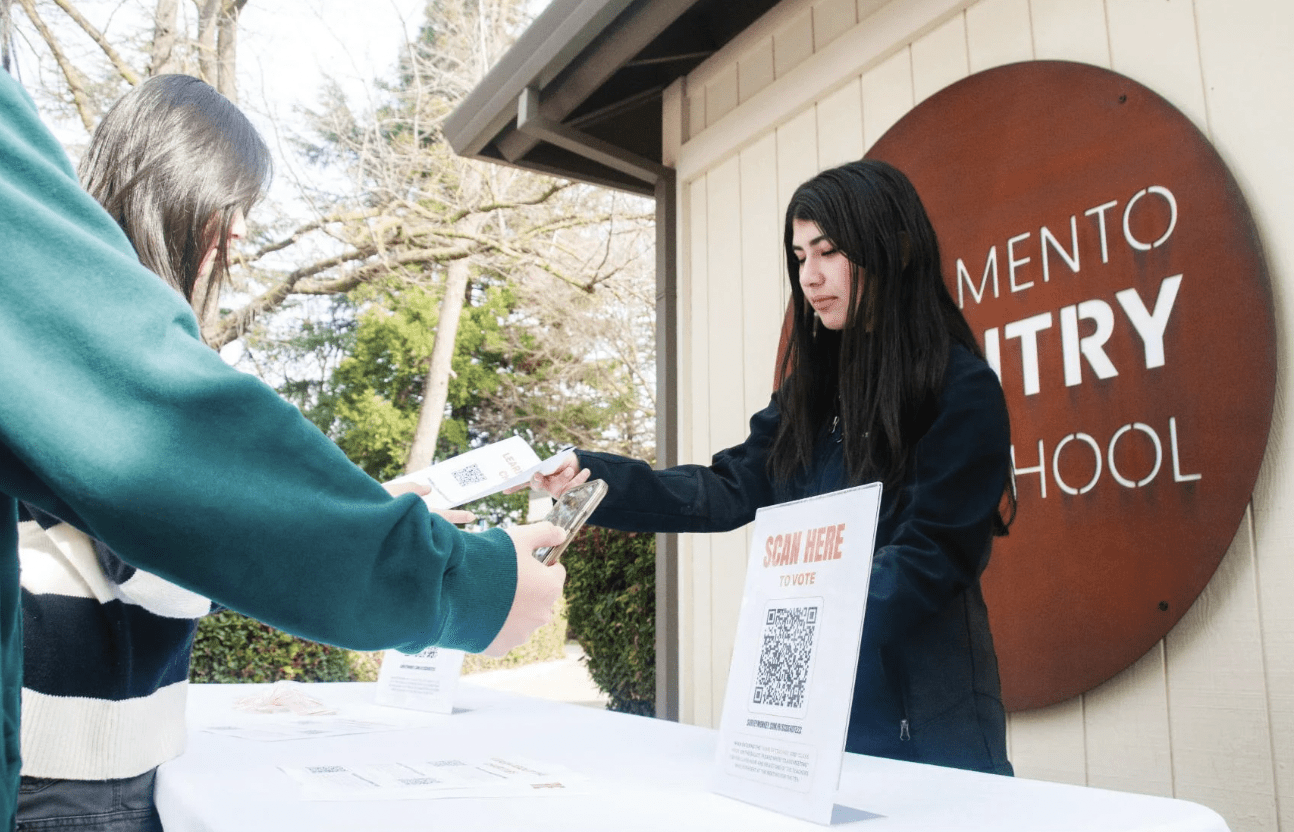School gardeners work through poor air quality; donate 1,000 pounds of produce
Creation of Country Day’s garden began in 2007 when a group of parents and students cleared a quarter of an acre in the field behind the school. Over several years, soil was turned, paths were laid and thousands of seeds were planted in the rich, productive soil.
Christina Kaufman, former president of the Parent-Teacher Association, has been maintaining the garden for the past year.
She works in the garden almost every morning for a couple hours, even as fires rage across California.
“I’ve taken a few days off when the air quality was too bad, but the days I went where there was mediocre air quality, my work was limited to one hour,” she said.
The garden has been producing summer crops: tomatoes, watermelon, cantaloupe, cucumber, peppers, jalapenos, butternut squash and delicata squash.
Kaufman gets help from several people, including middle school science teacher Aleitha Burns.
Both Kaufman and Burns said their passion for gardening began at a young age.
After moving from the Bay Area to Sacramento in 1980, Kaufman’s curiosity for gardening grew. She took advantage of living in the countryside by building a garden box in her backyard.
“I didn’t know anything about soil or soil health, so nothing grew. But sprouts came up and I thought, oh, this is the beginning,” she said.
Burns’ passion for gardening came from her grandmother, who grew up on a large cotton farm in Rosebud, Texas, in the late 1930s. Burns visited and worked on the farm during summer vacations as a child, she said.
There, she learned how to plant, harvest and can the peaches and other crops that they grew.
“The food we ate for breakfast, lunch and dinner were all grown on the farm,” Burns said.
Burns and Kaufman are involved with donating the garden’s produce to the River City Food Bank.
Country Day donated 10 times this summer, giving away about 100 pounds of produce each time, Kaufman said.
The number of donations were increased in the springtime due to the rise in unemployment, Burns said.
“Produce that would’ve gone home to Country Day families actually went to the greater community which was in need,” Burns said.
To give food to Country Day families, the garden held its first ever farm stand on Aug. 28.
“We handed out free food to all the families that drove through after picking up their school materials,” Kaufman said.
There will be future farm stands following the fall and spring harvests.
Over the past several years, the garden has been a teaching tool for the lower school.
The third grade class uses the garden for its Native American studies unit, Burns said.
A sub-garden called “The Three Sisters” grows Native American corn, beans and squash.
Due to COVID-19, the garden is not physically available for students, but Kaufman and volunteer gardener Michael Covey have developed an alternative.
“We will create weekly informative videos about what went on that week in the garden,” Kaufman said. “These might even be sent out in the Friday email for the greater community to enjoy.”
The garden also is used in the middle school as a Farm-to-Fork (F2F) elective, which Burns has been teaching for 13 years.
The elective teaches students how to plant, maintain, harvest and eventually how to cook the crop, Burns said.
Due to remote learning, F2F has shifted to an online seasonal cooking elective. Burns will make farm-stand bags for students to pick up at school and take home to cook. She teaches them how to prep, season and cook the food.
“I’m hoping to work closely with the garden to make this elective an amazing experience,” she said.
— By Rod Azghadi
Originally published in the Sept. 22 issue of the Octagon.


